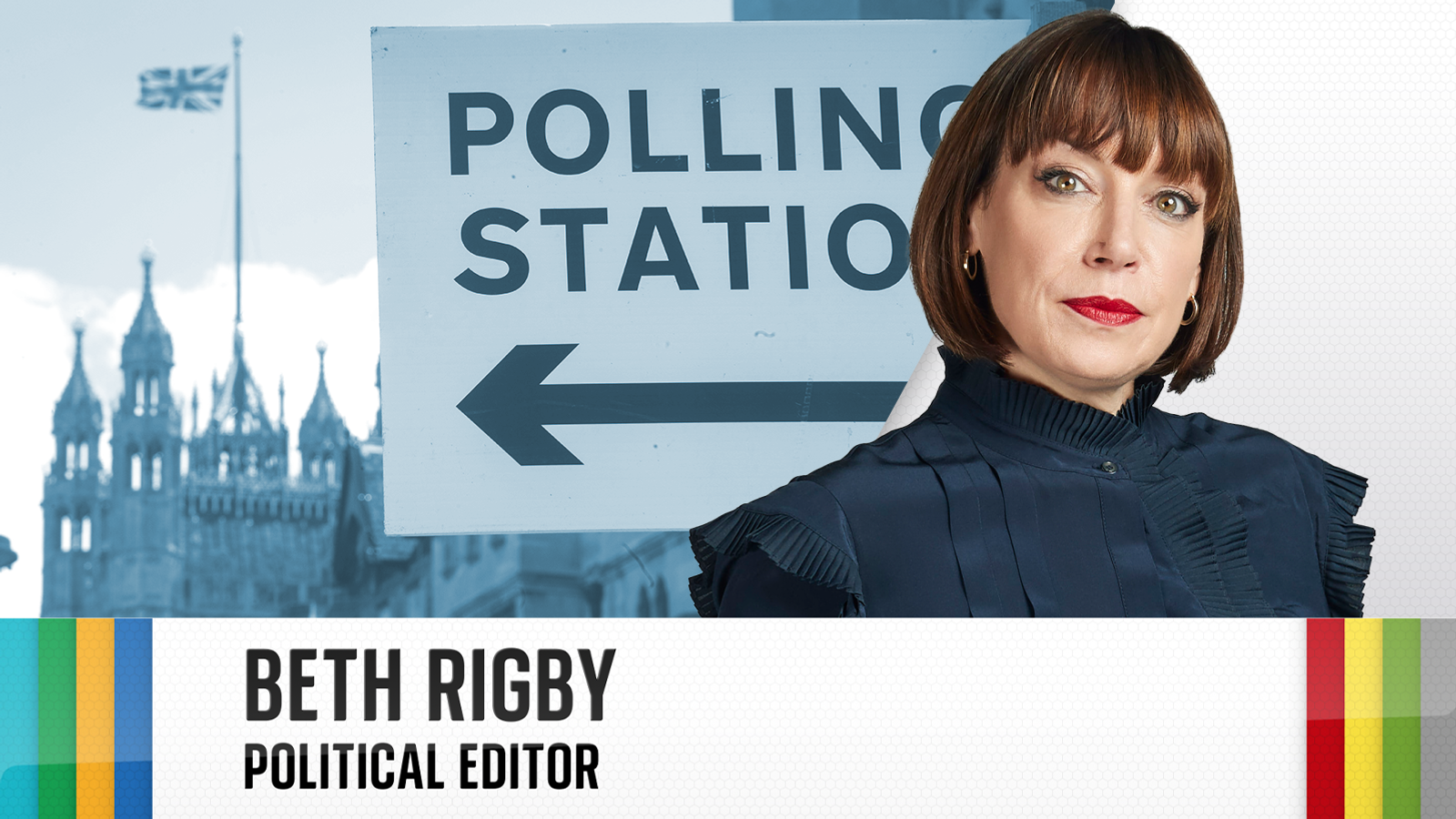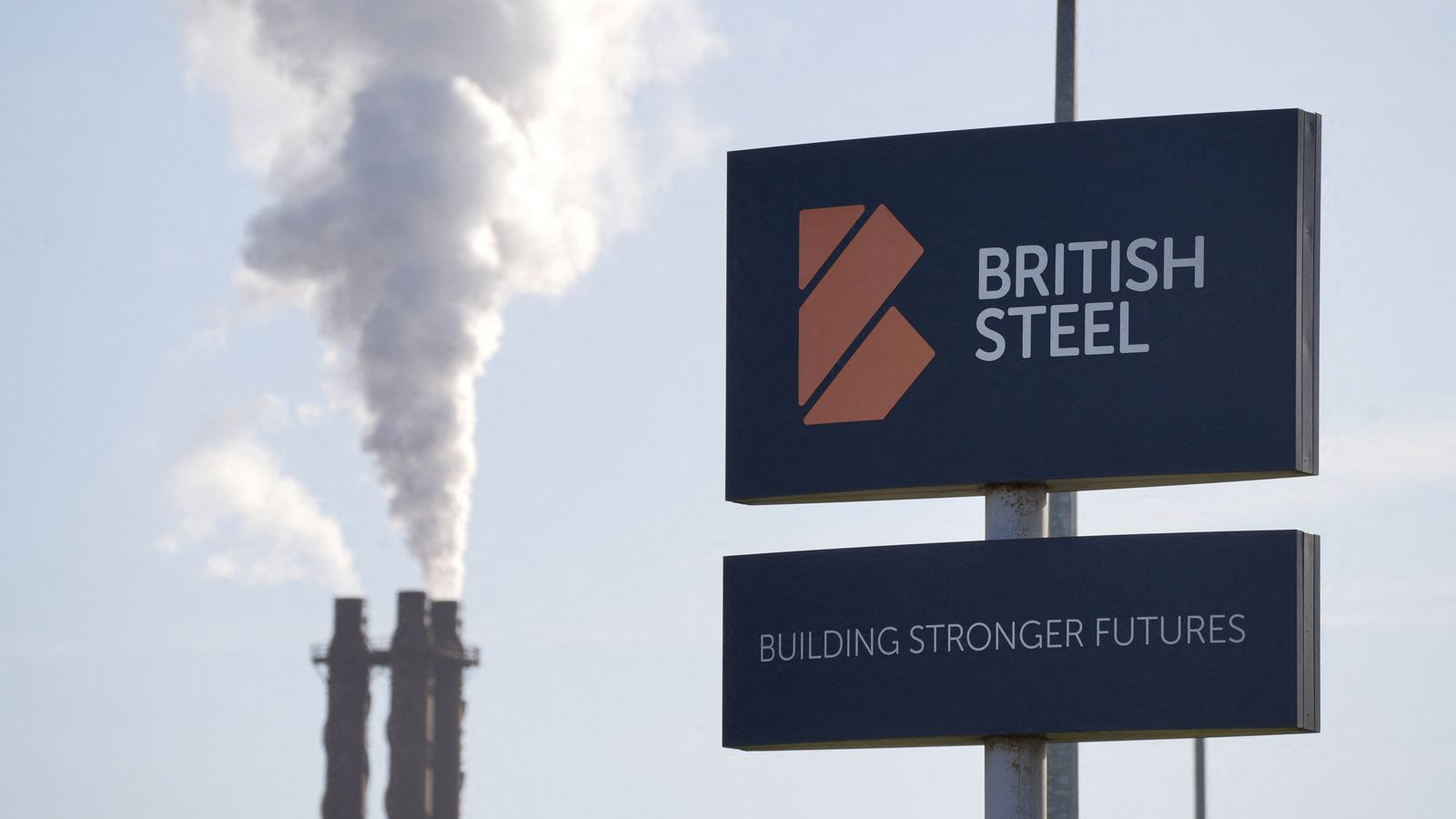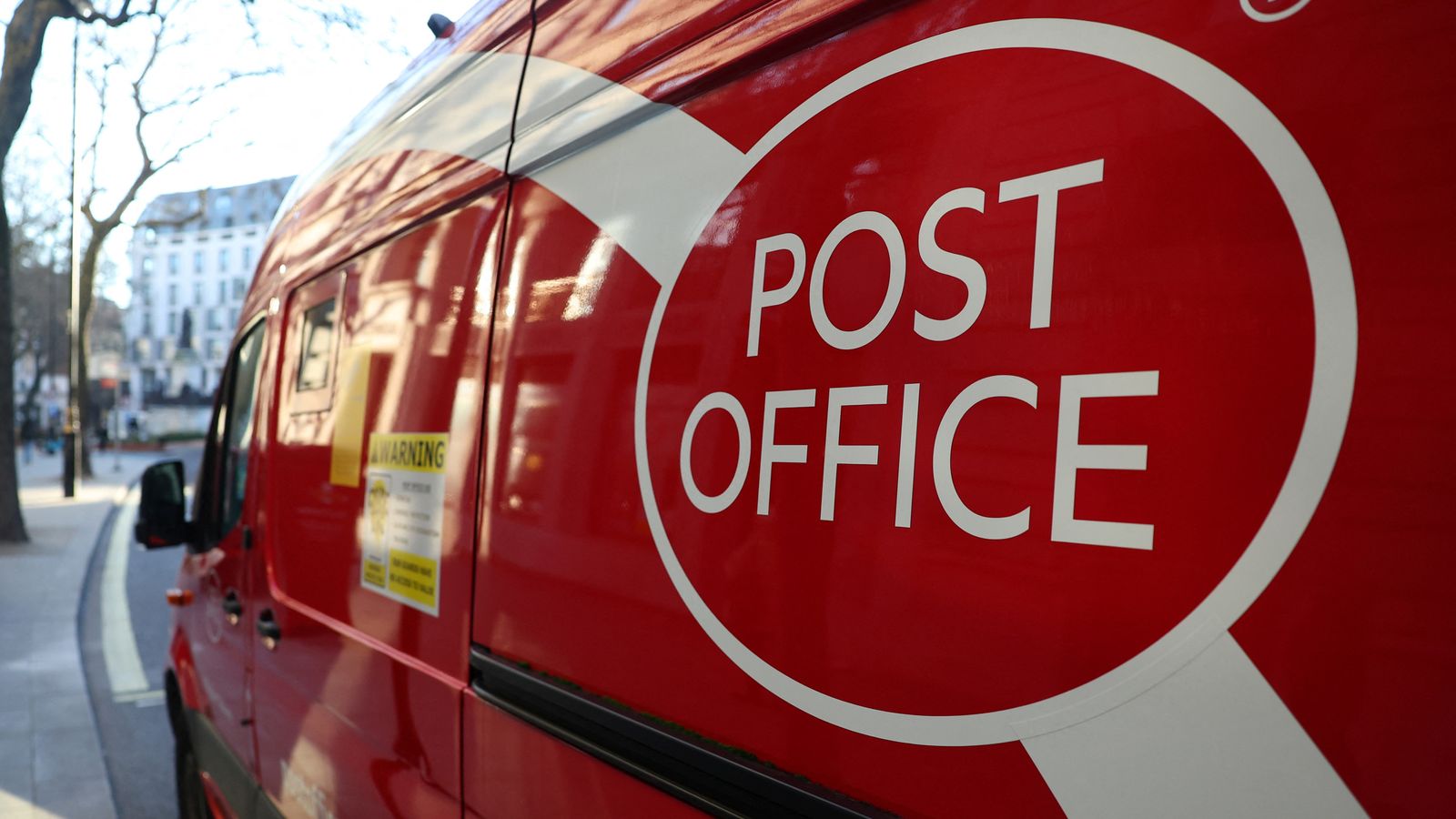
Bin collections, potholes, local schools and town centres: Ruth Davidson and Jess Phillips were right in our Electoral Dysfunction podcast last week when they talked about these issues being the political meat of local elections when it comes to what voters want to talk about on the doorstep.
But it’s true too that this set of local elections is hugely significant as the final big ballot test we’re going to get before a general election.
Some 28 million people across England and Wales have the option of casting a vote – be it for councillors, mayors, London Assembly members or police and crime commissioners – and Labour is using this polling day as a dry run for a general election, testing their arguments, focusing their spending and attention in local battlegrounds where they need to win for general election victory.
Politics latest: Potential SNP contender hints she will stand
And while much of the attention in the run-up to polling day has been on whether the results will trigger a full-blown leadership crisis for the Tories, what’s perhaps more relevant to you the voters is what these elections tell us about the prospect of a majority Labour government.
There are a couple of different markers to look out for.
Labour has had a consistent 20 point lead in the polls and the Conservatives have gone longer than six months without recording 30% in a poll. That hasn’t happened to either major party before. Does the polling translate into real votes?
Secondly, can Labour keep up the momentum it’s seen in recent by-elections in this England-wide poll? Because in these constituency battles, Labour has been trouncing the Tories. Sir Keir Starmer enjoyed the second-biggest swing to Labour in Wellingborough in February, while half of Labour’s top 10 swings since 1945 in by-elections have happened in the last 18 months.
To help us decipher whether Labour is looking on course to win a majority in a general election, the election experts Colin Rallings and Michael Thrasher will calculate the National Equivalent Vote (NEV) share. This projects the result of local council elections into a nationwide vote share to tell us if Labour is hitting the sort of vote share needed in a nationwide poll for general election victory.
👉 Listen above then tap here to follow Electoral Dysfunction wherever you get your podcasts 👈
We know an outright majority is record-breaking territory, made even harder by boundary changes which help the Tories, giving them a notional 94-seat majority against the 80 majority Boris Johnson secured in 2019.
Labour need a whopping 12.7% national swing to win a majority. That’s busting Blair’s 10.2% national swing of 1997 that gave him that huge majority (Labour don’t quite agree with this level of swing because its prospects in Scotland have radically changed since 2019 when the party won just one seat against the 20-plus they are expected to win today, and are therefore looking for a smaller nationwide swing than that).
In last year’s local elections, Labour snatched key battlegrounds from Tories but Starmer – based on the NEV – was far from achieving a majority government in the next general election unless a huge swing happens in his party’s favour. Based on analysis of council by-elections in the past year, Sky News’s Professor Michael Thrasher estimates Labour’s vote share on 2 May is likely to be between 36% to 38%, with the Conservatives between 28% to 30%. Can Starmer’s Labour do better this year than last?
What we’re looking for is an answer to the twin questions of are Rishi Sunak’s Conservatives doomed and is Labour on course for a majority? And the key indicator for that, according to Rallings & Thrasher, is whether the Tory NEV share is below 30% and Labour is pushing 40% or more.
And if you want to benchmark against how it compares to Blair’s performance in the run-up to 1997, in the 1995 local elections, Labour achieved a national equivalent vote of 47%, while in 1996 the party hit an NEV of 43%.
“In those days Labour was winning seats and councils across southern England and building the platform for its record-breaking victory,” says Professor Thrasher.
These are seriously high NEV shares, and Labour insiders point out that those sort numbers are getting harder to hit because in 1995 “other” parties were hitting 5% NEV against 17% in 2023.
That said, the Tories did hit 40% NEV in 2021 when Johnson was riding high. But equally, as Professor Thrasher points out, “this close to a general election, Labour should be persuading voters that they are best placed to unseat the Conservatives”.
Local elections: How to stream Sky News coverage, watch on TV and follow online
Perhaps it’s expectation management, but Labour tell me there are focused less on the NEV and more on where the wins are around the country.
For Labour strategists, the acid test is how they perform in key marginal areas to test whether they are winning votes in the battlegrounds of the general election. Insiders tell me they are not trying to achieve the highest voter share they can get as they pour resource into marginal areas rather than trying to turn out the Labour vote in safer parts of the country such as Manchester or Liverpool.
“We need to win the marginals in England,” says one Labour insider, “that is the benchmark”.
To that end, the East Midlands mayoralty is a key race for Labour because this region is home to a swathe of seats they need in the general election – Derby North, Mansfield, Ashfield, Erewash, Bassetlaw.
In the North East, they will want to eat into the big lead of Conservative Tees Valley Mayor Lord Ben Houchen to give them a sense of where they might be heading in constituencies like Hartlepool, Darlington, Redcar, Stockton.
In the West Midlands, they want to show they can take back constituencies such as Dudley, Sandwell and Wolverhampton. Another key fight is in Redditch, 15 miles south of Birmingham, where the notional Tory majority is 38.8%: Labour believe if they can win here, they can win a majority in the general election.
“Redditch is the type of constituency we are looking to win,” says one Labour insider of the West Midlands town. “As long as we win it we are less concerned about the share. Both us and the Conservatives will have a higher vote share in that seat in a general election.”
But these battlegrounds go well beyond those red wall areas. Labour wants to be picking up support across the country.
In the eastern region, Harlow in Essex is a big focus, as Labour tries to gain the council directly from the Conservatives in a constituency which, in the past 40 years, has always gone to whichever party won this parliamentary seat. Blair gained Harlow in 1997 with a swing of 13.6%, while the majority for the Conservatives in 2019 was the biggest of any party in Harlow’s history.
Watch out too for Thurrock and Basildon to the East, Milton Keynes and Rushmoor in the South East and Swindon and Plymouth in the South West.
Local elections 2024: Everything you need to know
So if that’s Labour majority territory, what’s the sliding scale of good to Armageddon for the Conservatives?
They are coming into these locals from a high point. When these seats were last contested in 2021, the Tories were riding high, enjoying a vaccine bounce and with Boris Johnson at the height of his popularity, snatching the Hartlepool from Labour in a by-election in a set of results so bad that Sir Keir Starmer considering quitting as Labour leader.
Should the Conservatives lose in the region of 500 seats out of the near 1,000 seats it’s defending, and fail to hold onto the Tees Valley of West Midlands mayoralty – or win the East Midlands race, then they are in serious trouble with any fleeting hope of recovering before a general election well and truly killed off. What happens after this is very unpredictable, with the prime minister at risk of facing a no-confidence and perhaps deciding to go for a summer election.
Professor Michael Thrasher says 250 seat losses and success in one of those three mayoral races – and for now West Midlands is too close to call while in Tees Valley Conservative Mayor Ben Houchen is only just ahead – shows that the Conservatives are doing far worse than where they were with back in 2021 with Boris Johnson, but more competitive with Labour than the polls suggest. 100 seat losses – and that will count as a massive victory.
As it stands, the latest intelligence I have is that Labour don’t think they can prise the Tees Valley mayoral rosette from Ben Hounchen, who beat Labour by 46 points last time.
“We’re not going to get a 23 point swing. But if Ben Houchen beats us by 10%, that will be a Pyrrhic victory, because at a general election that takes out all the seats in this jewel of the Tory crown.”
Labour instead in the final days of campaigning is taking resources from Tees Valley and channelling them into the West Midlands mayoral race, which is on a knife edge as the Labour party looks to oust Tory incumbent Andy Street.
“We can’t call it. Tories are slightly in the lead. We are trying to win it,” says one operative, who acknowledges that the problems with Labour-run Birmingham council, which hiked council tax bills by 21% after effectively being declared bankrupt, is hurting them in the city, despite progress being made in other local authorities in the West Midlands region.
So winning the East Midlands mayor, which has no incumbent, and the West Mids mayoralty would delight the Labour Party. That, on top of gains of say 350 seats, would match the sort of levels hit in last year’s local elections, but leave the party short of the Blair era momentum and struggling to hit that 40% National Equivalent Vote share.
Read more:
A crisis of trust spells trouble for government
How key places are predicted to vote on Thursday
Below 200 seats would point to a party failing to live up to polling ratings. One hundred gains, and it will be Starmer in the doldrums – not Sunak.
As for the Lib Dems, 150 gains and winning control of a couple of councils will reinforce its threat to the Tories. Watch out to see how Ed Davey’s band fares in Gloucester, Dorset, Portsmouth, Wokingham and Elmbridge. In contrast, 50 gains will be a bad night.
And a final thought for you, as we look at national vote shares and swings, watch out for another angle we’ll be looking out for: the rise of smaller parties in a country that seems to have fallen out of the love with the Conservatives but is perhaps still not convinced by Starmer.
If the country agrees that the Conservatives are the wrong choice, does it follow that Labour benefit, or will these locals demonstrate a big chunk of voters saying “neither of the above”?
The main parties will no doubt tour the TV studio sofas arguing that voters will treat national elections differently, but a strong showing of smaller parties and independent candidates will increase chatter that Starmer still hasn’t sealed the deal.














